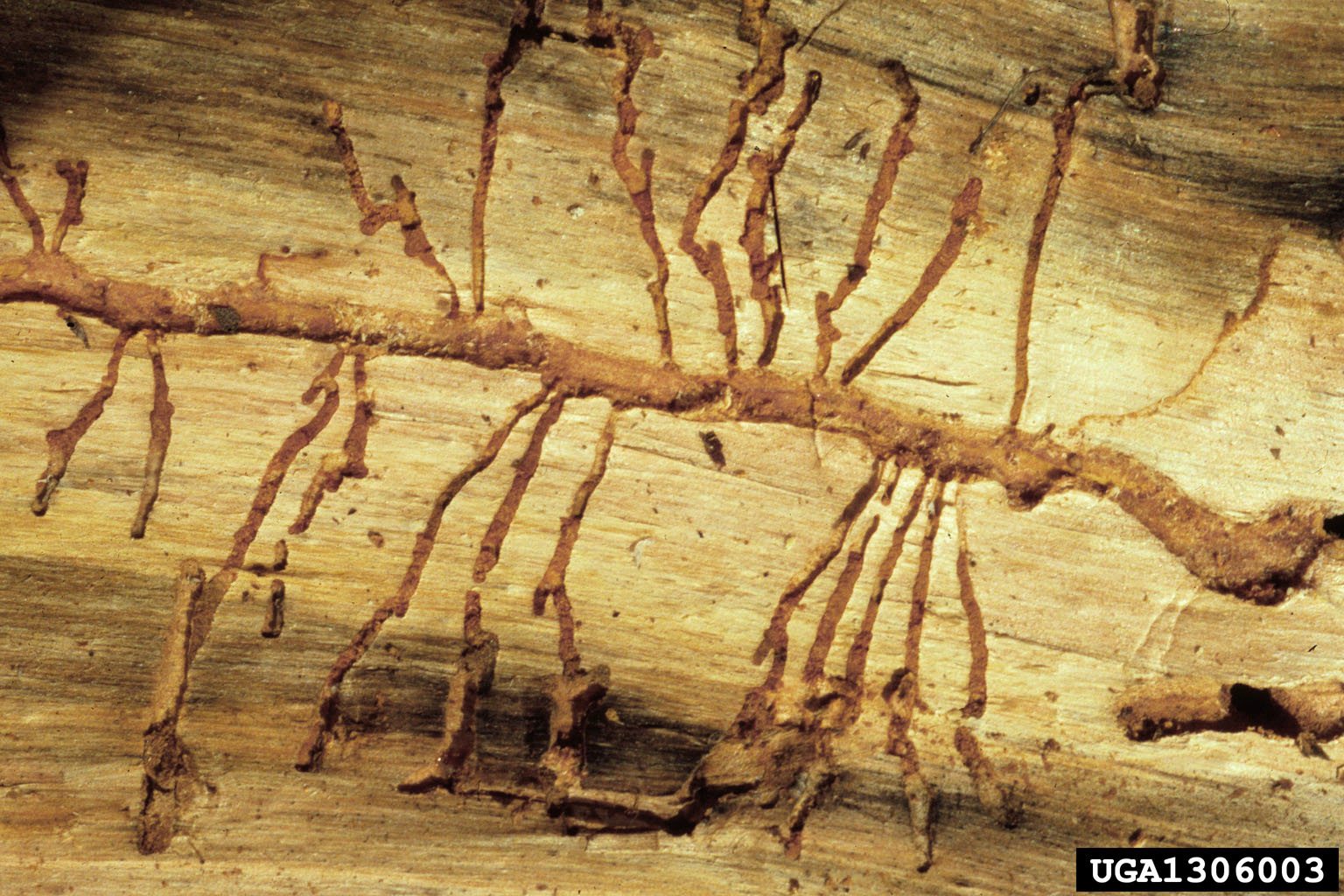Good picture of the "J" shape gallery the female makes. She will start at the bottom end then turn 180° and finish at the top. The male will pack it down and push it out. It creates the pitch tube at the entrance hole. Referred to as a hit. (I believe in Regions of Alberta the prober has to count 40 hits now or they leave it be ) Then you have pitch outs. Usually a purple resin at the entrance hole that drowns the biotch. Sometimes the tree can win.
I know a fair bit about MPB,
Back in the day we didn't have probing contracts and ticketed probers for fall & burn. It was 'search and destroyed' with chainsaw in hand and we only had to burn a metre past the last gallery we could see by looking at the and of the last block as you describe.
Admittedly, I knew nothing about the early stages of sap rot disease, the stain and how It came to be until now. I can detect heart rot & sap rot disease in later stages from outer fungus's on species I deal with OK. Some can be confusing, its an ongoing practice.
Sapwood fungus is that white 'matt like' growing generally on one side of the base. once that's present its definitely in the danger tree stage.
So I read up on the fungus. It spores and colonizes quickly, Its sticky spores blocks the water and nutrients and the resin's stop flowing. The article I read was a study of the USDA. They were able to test the beetles success rate without the fungus and they concluded they wouldn't have been able to be of any great threat alone. The trees defence of resin flow was to much ending up in 'pitch outs'. As they went on to say "its a deadly combination but what I was told about the larvae killing the tree sounds to be false, which doesn't surprise me as its an overlap and not a true girdle of the cambium. Small trees anyway, can live with a sliver of cambium in tact. The fungus also acts as a food source for larvae & Beetles as the flow quickly stops. I can't remember the word they use in English but the translation from Latin ment 'living with'
One can't exist without the other.
The disease could kill by it self but the beetle ..not so much.









